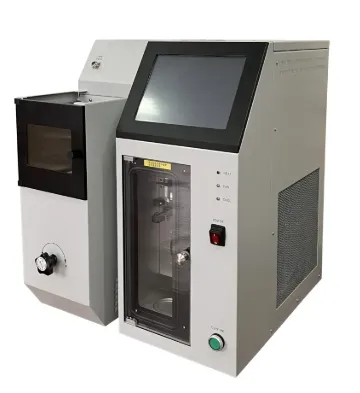TEL:
+86-0312-3189593
 English
English

Telephone:0312-3189593

Email:sales@oil-tester.com

-
 Afrikaans
Afrikaans -
 Albanian
Albanian -
 Amharic
Amharic -
 Arabic
Arabic -
 Armenian
Armenian -
 Azerbaijani
Azerbaijani -
 Basque
Basque -
 Belarusian
Belarusian -
 Bengali
Bengali -
 Bosnian
Bosnian -
 Bulgarian
Bulgarian -
 Catalan
Catalan -
 Cebuano
Cebuano -
 China
China -
 China (Taiwan)
China (Taiwan) -
 Corsican
Corsican -
 Croatian
Croatian -
 Czech
Czech -
 Danish
Danish -
 Dutch
Dutch -
 English
English -
 Esperanto
Esperanto -
 Estonian
Estonian -
 Finnish
Finnish -
 French
French -
 Frisian
Frisian -
 Galician
Galician -
 Georgian
Georgian -
 German
German -
 Greek
Greek -
 Gujarati
Gujarati -
 Haitian Creole
Haitian Creole -
 hausa
hausa -
 hawaiian
hawaiian -
 Hebrew
Hebrew -
 Hindi
Hindi -
 Miao
Miao -
 Hungarian
Hungarian -
 Icelandic
Icelandic -
 igbo
igbo -
 Indonesian
Indonesian -
 irish
irish -
 Italian
Italian -
 Japanese
Japanese -
 Javanese
Javanese -
 Kannada
Kannada -
 kazakh
kazakh -
 Khmer
Khmer -
 Rwandese
Rwandese -
 Korean
Korean -
 Kurdish
Kurdish -
 Kyrgyz
Kyrgyz -
 Lao
Lao -
 Latin
Latin -
 Latvian
Latvian -
 Lithuanian
Lithuanian -
 Luxembourgish
Luxembourgish -
 Macedonian
Macedonian -
 Malgashi
Malgashi -
 Malay
Malay -
 Malayalam
Malayalam -
 Maltese
Maltese -
 Maori
Maori -
 Marathi
Marathi -
 Mongolian
Mongolian -
 Myanmar
Myanmar -
 Nepali
Nepali -
 Norwegian
Norwegian -
 Norwegian
Norwegian -
 Occitan
Occitan -
 Pashto
Pashto -
 Persian
Persian -
 Polish
Polish -
 Portuguese
Portuguese -
 Punjabi
Punjabi -
 Romanian
Romanian -
 Russian
Russian -
 Samoan
Samoan -
 Scottish Gaelic
Scottish Gaelic -
 Serbian
Serbian -
 Sesotho
Sesotho -
 Shona
Shona -
 Sindhi
Sindhi -
 Sinhala
Sinhala -
 Slovak
Slovak -
 Slovenian
Slovenian -
 Somali
Somali -
 Spanish
Spanish -
 Sundanese
Sundanese -
 Swahili
Swahili -
 Swedish
Swedish -
 Tagalog
Tagalog -
 Tajik
Tajik -
 Tamil
Tamil -
 Tatar
Tatar -
 Telugu
Telugu -
 Thai
Thai -
 Turkish
Turkish -
 Turkmen
Turkmen -
 Ukrainian
Ukrainian -
 Urdu
Urdu -
 Uighur
Uighur -
 Uzbek
Uzbek -
 Vietnamese
Vietnamese -
 Welsh
Welsh -
 Bantu
Bantu -
 Yiddish
Yiddish -
 Yoruba
Yoruba -
 Zulu
Zulu
Mar . 06, 2025 16:07
Back to list
PS-JSB01 Transformer Dielectric Loss Analysis Tan Delta Tester
Understanding the concept of 'tan delta' in transformers is crucial for ensuring the reliability and performance of electrical systems. Tan delta, also known as the loss angle or dissipation factor, is a measure of dielectric losses in electrical insulation. This metric is particularly significant in transformers, as it helps assess the health and efficiency of the insulation system, which is integral to the transformer's operation.
Experienced engineers underline the importance of trending analysis in tan delta results. A single tan delta measurement provides a snapshot in time of the insulation's condition, but regular testing over time—known as trending—can reveal the rate of degradation. This predictive insight enables timely interventions, which can range from simple maintenance measures to complete insulation replacement. Trust in tan delta testing also stems from its ability to provide actionable insights that can extend the lifespan of transformers. Electrical utilities worldwide acknowledge the role of routine tan delta testing as part of their asset management strategies. By identifying potential failures proactively, utilities prevent outages and enhance their reputation for reliability. Investment in tan delta testing equipment and training also showcases a commitment to safety and operational excellence. Advanced diagnostic tools have evolved to include features that aid in easy setup and accurate readings, allowing engineers to conduct tests efficiently while minimizing the risk of human error. In summary, the tan delta of a transformer is more than just a test value; it is a crucial metric that underpins the reliability and longevity of electrical power systems. While the testing requires specialized skills and equipment, its benefits in preemptive maintenance make it invaluable. Through routine testing and comprehensive analysis, industry professionals can ensure transformers operate efficiently, providing consistent power flow and safeguarding infrastructure against unexpected failures. Understanding and implementing tan delta testing is, therefore, a cornerstone of modern electrical engineering practices.


Experienced engineers underline the importance of trending analysis in tan delta results. A single tan delta measurement provides a snapshot in time of the insulation's condition, but regular testing over time—known as trending—can reveal the rate of degradation. This predictive insight enables timely interventions, which can range from simple maintenance measures to complete insulation replacement. Trust in tan delta testing also stems from its ability to provide actionable insights that can extend the lifespan of transformers. Electrical utilities worldwide acknowledge the role of routine tan delta testing as part of their asset management strategies. By identifying potential failures proactively, utilities prevent outages and enhance their reputation for reliability. Investment in tan delta testing equipment and training also showcases a commitment to safety and operational excellence. Advanced diagnostic tools have evolved to include features that aid in easy setup and accurate readings, allowing engineers to conduct tests efficiently while minimizing the risk of human error. In summary, the tan delta of a transformer is more than just a test value; it is a crucial metric that underpins the reliability and longevity of electrical power systems. While the testing requires specialized skills and equipment, its benefits in preemptive maintenance make it invaluable. Through routine testing and comprehensive analysis, industry professionals can ensure transformers operate efficiently, providing consistent power flow and safeguarding infrastructure against unexpected failures. Understanding and implementing tan delta testing is, therefore, a cornerstone of modern electrical engineering practices.
Latest news
-
Testing Equipment Industry Sees Major Advancements in 2025: Smart & Precision Technologies Lead the WayNewsJun.06,2025
-
Applications of Direct Current Generators in Renewable Energy SystemsNewsJun.05,2025
-
Hipot Tester Calibration and Accuracy GuidelinesNewsJun.05,2025
-
Digital Circuit Breaker Analyzer Features and BenefitsNewsJun.05,2025
-
Benefits of Real-Time Power Quality Monitoring Devices for Industrial EfficiencyNewsJun.05,2025
-
Earth Fault Loop Testing in High-Rise Building Electrical SystemsNewsJun.05,2025



